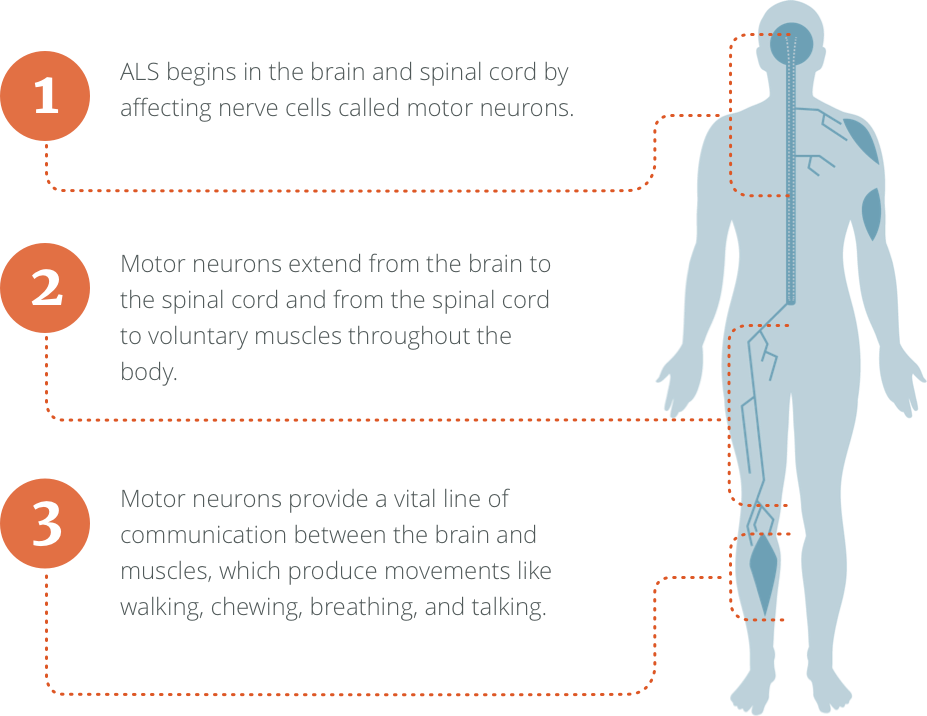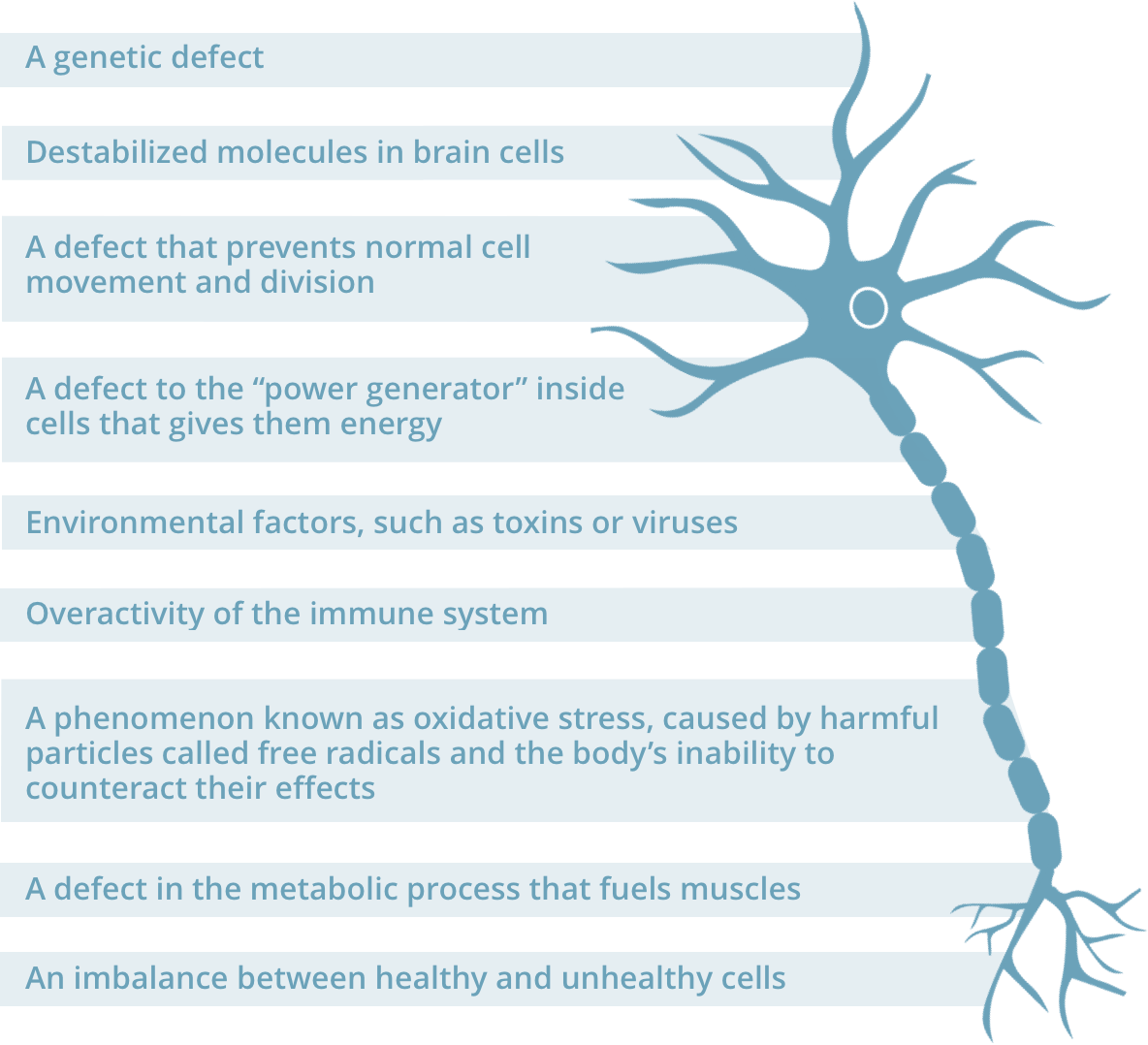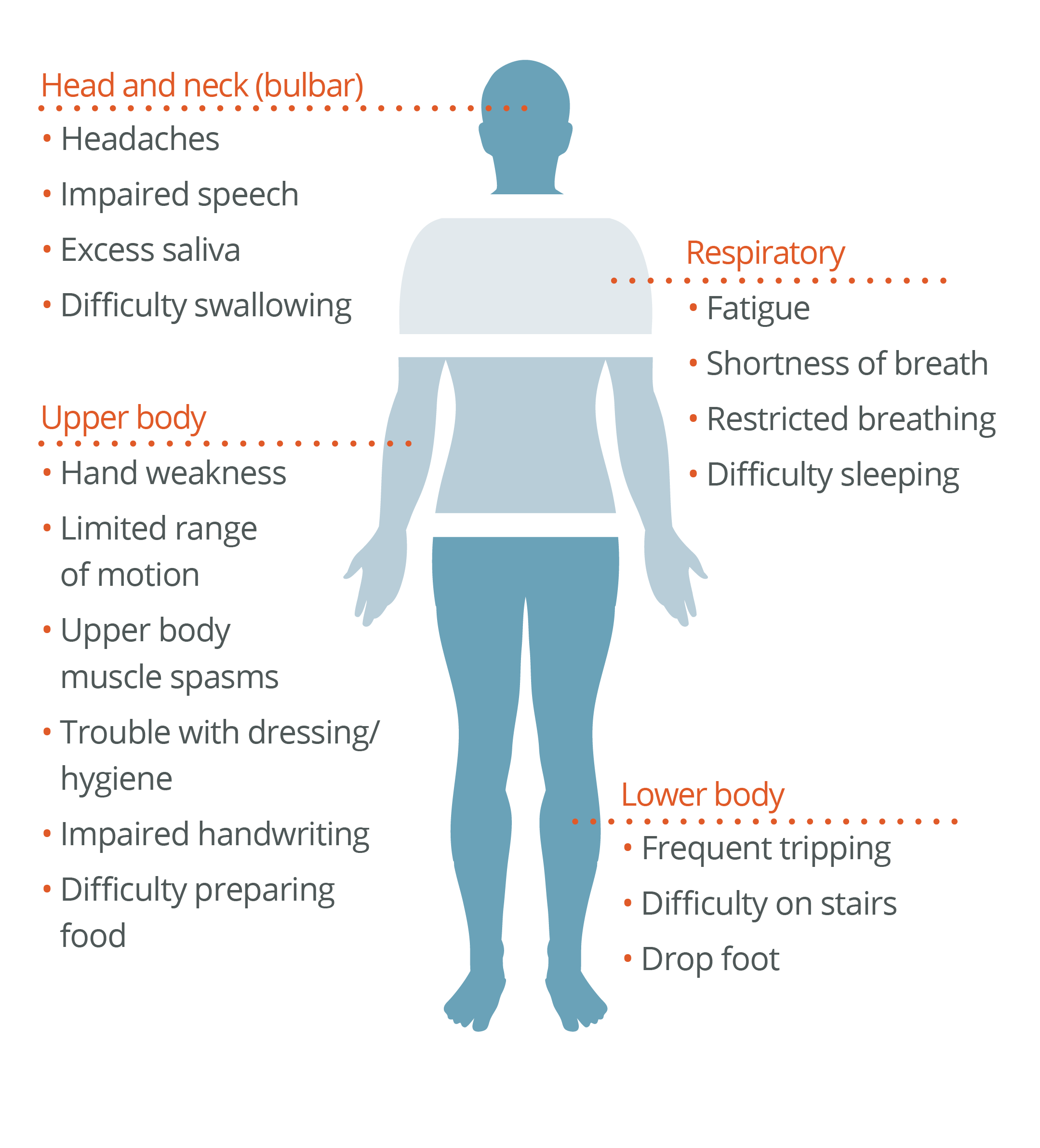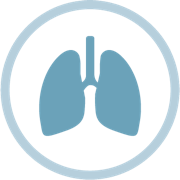About ALS
What Is ALS?
Amyotrophic Lateral Sclerosis (ALS), also known as Lou Gehrig’s Disease, is a progressive, neurological (nervous system) disease that affects nerve cells (motor neurons) in the brain and spinal cord.
ALS attacks motor neurons that control muscles of the body, leading to progressive weakness and disability. When these cells die, voluntary muscle control and movement becomes impaired.
A-myo-trophic comes from the Greek language. "A" means no, "myo" refers to muscle and "trophic" means nourishment – "no muscle nourishment.”
ALS is referred to as a progressive disease since symptoms continue to get worse over time. People with ALS gradually lose strength in their muscles and become weaker, which can limit movement and the ability to live an independent life.
As ALS progresses, it will eventually affect muscles that control breathing, as well as chewing and swallowing food.
As ALS progresses, it will eventually affect muscles that control breathing, as well as chewing and swallowing food.
ALS and Your Body
How Does ALS Affect the Body?

ALS begins in the brain and spinal cord by affecting nerve cells called motor neurons.
Motor neurons extend from the brain to the spinal cord, and from the spinal cord to voluntary muscles throughout the body.
Motor neurons provide a vital line of communication between the brain and muscles, which produce movements like walking, chewing, breathing, and talking.
In people with ALS, these motor neurons stop working. When this happens, the brain can no longer communicate with the muscles.
Over time, the brain loses its ability to initiate and control certain muscle movements, resulting in progressive weakness and paralysis. People living with ALS may eventually need assistance with speaking, eating, and breathing on their own.
Over time, the brain loses its ability to initiate and control certain muscle movements, resulting in progressive weakness and paralysis. People living with ALS may eventually need assistance with speaking, eating, and breathing on their own.
ALS spreads at different rates for everyone. Talk with your healthcare provider(s) about how your ALS is progressing.
Who Gets ALS?
ALS Can Affect Anyone
If you have ALS, it’s important to remember you’re not alone. ALS affects people of all ages, races, and ethnic backgrounds. ALS is the most common of the motor neuron diseases (MNDs), which is a wider group of disorders that can lead to loss of physical function.

In an estimated Canadian population of 34 million, approximately 2,000 – 3,000 people in Canada currently have ALS.

In any given year, about two new cases of ALS per 100,000 people will be diagnosed in Canada.
What Causes ALS?
The contributing factors for developing ALS are not fully understood. However, in some rare cases, ALS may be inherited. There are generally two types of ALS:
- Familial ALS
- Affects: 5% to 10% of people with ALS
- Cause: Hereditary
- Sporadic ALS
- Affects: 90% to 95% of people with ALS
- Cause: Unknown
Research suggests many factors can contribute to the loss of motor neurons in the brain. These factors may include:


Symptoms of ALS
ALS Symptoms Affect Everyone Differently
No two people with ALS are alike. This is because the signs and symptoms of ALS vary from person to person and often affect different regions of the body.
Knowing which parts of your body are affected by ALS can help you and your healthcare provider(s) better understand how ALS will impact you moving forward.
Knowing which parts of your body are affected by ALS can help you and your healthcare provider(s) better understand how ALS will impact you moving forward.


Two newly diagnosed people with ALS may experience their disease in very different ways. For instance, one person may have trouble grasping a pen or lifting utensils, while another may have trouble chewing their food.
The number and degree of symptoms typically increase as the disease gets worse. At later stages of the disease, people may become incapable of movement and rely on caregivers for complete assistance.
The number and degree of symptoms typically increase as the disease gets worse. At later stages of the disease, people may become incapable of movement and rely on caregivers for complete assistance.
For many people, there are certain functions ALS does not affect. Most people typically maintain:
Their sight, touch, taste, hearing, and smell
Control of eye muscles, bladder, and bowel functions
Some people with ALS retain an alert mind but it is not uncommon for others to experience cognitive or behavioural changes.
Symptoms of impaired cognitive ability and behavioural changes include:
- A change in personality and acting uncharacteristically
- Conducting in inappropriate, embarrassing or childlike mannerisms
- Making inappropriate comments, also referred to as having a lack of “filter”
- Difficulty making decisions or making decisions that is inconsistent with past views or behaviours
- Impairments in thinking, reasoning or problem solving
- Decreased attention to hygiene, such as bathing, grooming, dressing and using the washroom
- Inability to follow instruction
- Changes in language processing such as the use of improper grammar, difficulty spelling or speaking that becomes nonsensical
Because of the individual nature of ALS, it’s extremely important that you speak with your healthcare provider(s) about all symptoms you may be experiencing.
Tools to Track ALS
How to Track ALS
The symptoms of ALS get worse over time. Therefore, it’s important to carefully monitor these symptoms and track your disease activity. This can help you and your healthcare provider(s) better understand how ALS is affecting your body and how quickly it’s progressing.
Several clinical measures have been developed to monitor your ALS. Some of these include
Several clinical measures have been developed to monitor your ALS. Some of these include

Doctor-administered questionnaires ask people with ALS to rate how well different muscle groups are working, based on a sliding scale. The individual scores for each muscle group are then tallied, providing a high-level assessment of overall muscle function.
The most well-known questionnaire is called the ALS Functional Rating Scale-Revised (ALSFRS-R).
The most well-known questionnaire is called the ALS Functional Rating Scale-Revised (ALSFRS-R).

Since muscle weakness is a major feature of ALS, measuring strength over time can help your healthcare provider understand how quickly ALS is progressing. The most commonly used strength measurement is called handheld dynamometry (HHD). During HHD, the examiner holds a small gauge that an individual pushes against using different muscle groups.

As respiratory (breathing) dysfunction remains the most common cause of death among people with ALS, assessing lung function is extremely important. A pulmonary function test (PFT) measures the maximum amount of air an individual can exhale from their lungs after taking the deepest possible breath.
Ask your healthcare provider(s) about different measurements to track your ALS.




